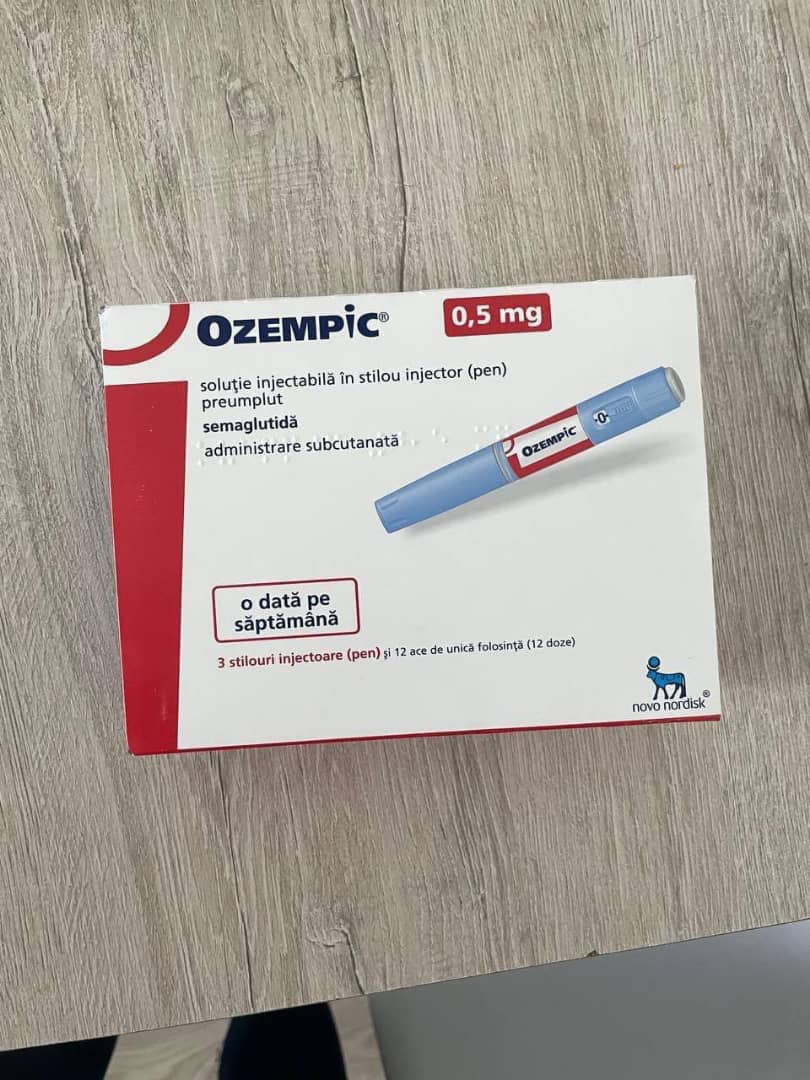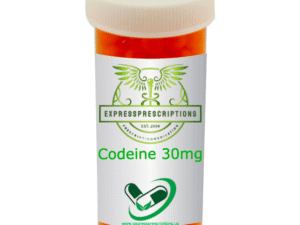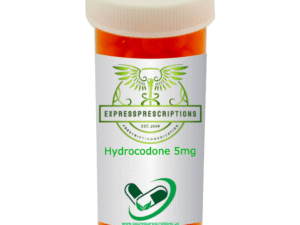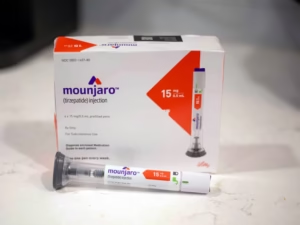Description
What is Ozempic?
Ozempic mimics a natural hormone called GLP-1 that is released when we eat to balance blood sugar and make us feel full after meals.
Ozempic works (mechanism of action) by binding and activating GLP-1 receptors, which increases insulin release, slows stomach emptying, and reduces sugar production by the liver. This results in improved blood sugar levels (HbA1c levels), prolonged fullness, and controlled appetite, which may result in weight loss.
Ozempic is from a class of medicines called GLP-1 agonists.
Also, Ozempic injection can be self-administered under the skin once a week using an autoinjector (pen).
Ozempic for weight loss
Ozempic for weight loss was successful in the clinical trial NCT02054897, a double-blind 30-week clinical trial. More soOzempic (semaglutide) weight loss results were:
- 2.6 kg more weight loss than placebo (with a 0.5 mg dose)
- 3.5 kg more weight loss than placebo (with a 1 mg dose)
More so , Ozempic helped with weight loss and the maintenance of weight loss in clinical trials when combined with diet and exercise. It contains the active ingredient semaglutide, a GLP-1 receptor agonist that works by slowing down digestion and making you feel fuller for longer. However, it is not FDA-approved for weight loss. Wegovy is the brand of semaglutide approved for weight loss, see Wegovy vs Ozempic: Which is right for you? Or Ozempic for weight loss for more information.
Benefits
- Blood sugar control and HbA1C reduction*
- Significant weight loss support
- Lower risk of heart attack and stroke
- Improved cardiovascular health in type 2 diabetes patients
- Slows the decline of kidney disease and improves cardiovascular outcomes in patients with chronic kidney disease (CKD) and type 2 diabetes.
Ozempic and Type 2 Diabetes
*HbA1C (A1C) measures your average blood sugar level over the past 2-3 months.
Benefits of using Ozempic in diabetes were seen in the 30-week clinical trial (NCT02054897):
- 73% of Ozempic 0.5 mg patients achieved A1C of 7% or less.
Ozempic and CKD and heart disease
A clinical trial (FLOW phase 3b), found two important benefits of using Ozempic in adults with type 2 diabetes and CKD:
- 24% lower risk of their kidney disease getting worse
- 4.9% lower risk of dying from heart problems.
How Does Ozempic Work?
Ozempic’s mechanism of action involves mimicking a natural hormone in the body called GLP-1, which:
- Stimulates insulin production from the pancreas
- Reduces liver sugar production
- Slows down digestion
- Helps control appetite and food intake.
The way Ozempic works for kidney-related risk reduction is not fully understood.
“Oatzempic” is a term coined on social media, referring to a blended drink made from oats, water, and lime juice, that may make you feel fuller for longer and help you eat less. However, there are no clinical trials to prove this drink helps you lose weight (see Oatmeal Ozempic for Weight Loss? Oatzempic).
FDA Approval
Ozempic is FDA-approved to treat type 2 diabetes in adults to:
- Control blood sugar (glucose) control along with diet and exercise
- Reduce major cardiovascular event risks (such as heart attack, stroke, or death) in adults with type 2 diabetes with known heart disease
- Reduce the risk of kidney disease worsening, kidney failure, and death due to cardiovascular disease in patients with type 2 diabetes and chronic kidney disease.
Ozempic FDA approval was granted on December 5, 2017. There is no Ozempic generic. Each of the different brands of semaglutide (Ozempic, Rybelus, Wegovy) are made by Novo Nordisk, but are FDA-approved for different conditions.
WARNING: Ozempic is not approved for type 1 diabetes treatment and it is not known if it can be used in people with pancreatitis.
Side effects
Common side effects
The most common Ozempic side effects are:
- Nausea (16% to 20%)
- Diarrhea (8% to 9%)
- Vomiting (5% to 9%)
- Stomach pain (6% to 7%)
- Constipation (3% to 5%)
- Low blood sugar (1.6% to 3.8%)
Less common side effects include heartburn, burping, gas upset stomach, and gastritis.
These Ozempic side effects occurred in pooled placebo-controlled trials of Ozempic 0.5 mg for Type 2 Diabetes Mellitus.
Stomach or gastrointestinal side effects are common but tend to be mild and clear up in a few weeks in most people and will not interfere with long-term treatment. Stomach side effects usually occur at the beginning of treatment and if your dose is increased too quickly, or at higher doses. Because of this, your healthcare provider will slowly increase your dose every 4 weeks as needed until you reach your target dose. You can take Ozempic with or without meals.
More patients receiving Ozempic 0.5 mg (3.1%) and 1 mg (3.8%) discontinued treatment due to stomach side effects than patients receiving placebo (0.4%).
Tips for managing Ozempic stomach side effects
Following these tips may help you manage Ozempic stomach side effects:
- eat more slowly
- consume smaller meals
- select more bland, low-fat foods (like crackers, toast, and rice)
- avoid greasy, fried foods or sugar treats
- eat foods that contain water (like soup or gelatin)
- don’t lie down right after eating
- drink clear or ice-cold liquids
- if possible, go outside for fresh air if you feel sick to your stomach
Ozempic face
Ozempic face is a term used to describe the noticeable facial changes seen in some people who are prescribed this medicine. These changes are not a specific side effect of Ozempic, but rather a result of significant weight loss (see Ozempic face: What causes it and how to prevent it?).
Serious side effects
Ozempic can cause serious side effects such as inflammation of the pancreas, vision changes, low blood sugar levels, kidney problems, and serious allergic reactions, and it can also increase the risk of food or liquid getting into your lungs during surgery or a medical procedure (see side effects to watch for).
Get emergency medical help if you have signs of an allergic reaction, such as hives, itching, dizziness, fast heartbeats, difficulty breathing, or swelling of your face, lips, tongue, or throat.
Call your healthcare provider at once if you have:
- vision changes;
- unusual mood changes, thoughts about hurting yourself;
- pounding heartbeats or fluttering in your chest;
- a light-headed feeling, like you might pass out;
- signs of a thyroid tumor – swelling or a lump in your neck, trouble swallowing, a hoarse voice, feeling short of breath;
- symptoms of pancreatitis – severe pain in your upper stomach spreading to your back, nausea with or without vomiting, fast heart rate;
- gallbladder problems – upper stomach pain, fever, clay-colored stools, jaundice (yellowing of the skin or eyes);
- low blood sugar–headache, hunger, weakness, sweating, confusion, irritability, dizziness, fast heart rate, or feeling jittery;
- kidney problems – swelling, urinating less, blood in urine, feeling tired or short of breath
- stomach flu symptoms – stomach cramps, vomiting, loss of appetite, diarrhea (may be watery or bloody)
- symptoms of ileus (stomach paralysis) – bloating, stomach cramps or pain, nausea or vomiting, constipation or diarrhea, loss of appetite.
Food or liquid getting into the lungs during surgery or other procedures that require anesthesia or deep sleepiness (deep sedation). Ozempic may increase the chance of food getting into your lungs during surgery or other procedures. Tell all your healthcare providers that you are taking this medicine before you are scheduled to have surgery or other procedures.
This is not a complete list of side effects and others may occur. Call your doctor for medical advice about side effects. You may report side effects to the FDA at 1-800-FDA-1088.






